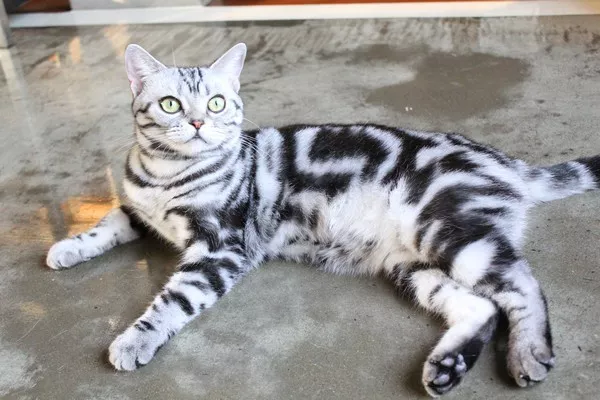The American Shorthair cat, known for its adaptable and amiable nature, is a popular breed among feline enthusiasts. For those considering breeding or those who have welcomed an American Shorthair into their homes, understanding the intricacies of feline reproduction is essential. One crucial aspect of this understanding is the potential litter size that an American Shorthair can have. In this article, we will explore the factors influencing feline reproduction, the average litter size for American Shorthairs, and considerations for responsible breeding practices.
Factors Influencing Feline Reproduction:
Age and Health of the Cat:
The age and health of the female cat play a significant role in determining her reproductive capabilities. Generally, female cats reach sexual maturity between six months to a year. However, it’s important to note that while a cat may be physically capable of reproduction, responsible breeding practices often involve waiting until the cat is at least one year old to ensure she is mentally and physically mature.
Breed Characteristics:
Different cat breeds may exhibit variations in reproductive traits. American Shorthairs, being a robust and healthy breed, typically have good reproductive capabilities. However, individual variations within the breed are common, so it’s important to consider the specific cat’s health and genetic background.
Nutrition and Care:
The overall health and well-being of the cat, influenced by factors such as nutrition and veterinary care, can impact her reproductive health. Providing a balanced and nutritious diet, along with regular veterinary check-ups, contributes to a healthy reproductive system.
Environment and Stress:
The cat’s living environment and stress levels can affect reproductive health. A calm and comfortable environment is ideal for supporting a successful pregnancy. Minimizing stressors, such as changes in routine or exposure to aggressive animals, can positively impact the cat’s reproductive well-being.
Average Litter Size for American Shorthairs:
The average litter size for American Shorthairs can vary, but it typically ranges from three to five kittens. However, it’s important to note that there can be exceptions, and some American Shorthairs may have larger or smaller litters. Factors such as genetics, the age of the cat, and overall health contribute to these variations.
Considerations for Responsible Breeding Practices:
Pre-Breeding Health Check:
Before considering breeding, it’s essential to ensure that both the male and female American Shorthair are in good health. This includes vaccinations, parasite control, and a thorough veterinary examination to identify and address any potential health concerns.
Genetic Screening:
Responsible breeders prioritize the health and well-being of the offspring. Genetic screening helps identify potential hereditary conditions within the breed, allowing breeders to make informed decisions to reduce the risk of passing on genetic disorders.
Proper Timing:
The timing of breeding is crucial to maximize the chances of a successful pregnancy. Female cats have a specific estrus cycle, commonly known as being “in heat.” Understanding and tracking this cycle helps determine the optimal time for mating.
Prenatal Care:
Once a female cat is confirmed pregnant, providing proper prenatal care is essential. This includes monitoring her nutrition, ensuring she receives the necessary vaccinations, and creating a comfortable and stress-free environment for her to give birth and care for her kittens.
Socialization and Placement:
Responsible breeders focus not only on the physical health of the kittens but also on their socialization. Kittens benefit from early interactions with humans and exposure to various stimuli. Additionally, finding suitable and loving homes for the kittens is a crucial responsibility of the breeder.
Additional Considerations:
Postnatal Care:
After the kittens are born, proper postnatal care is crucial for the health of both the mother and the newborns. The mother should continue to receive a nutritious diet, and any signs of health issues in either the mother or the kittens should be promptly addressed by a veterinarian.
Monitoring Development:
As the kittens grow, it’s essential to monitor their development. Regular veterinary check-ups help ensure that the kittens are reaching appropriate milestones, and any potential health concerns can be addressed early on.
Spaying and Neutering:
For those not involved in breeding, spaying and neutering are essential steps in controlling the feline population. Responsible pet owners often choose to spay or neuter their American Shorthairs to prevent unplanned litters and contribute to the overall well-being of their cats.
Educating Potential Owners:
Responsible breeders take the time to educate potential kitten owners about the specific needs of American Shorthairs. This includes information on nutrition, grooming, and general care, ensuring that the new owners are well-prepared to provide a loving and supportive environment for their new feline family member.
Responsible Rehoming:
When it comes time to rehome the kittens, responsible breeders carefully vet potential owners. They seek individuals or families who are committed to providing a lifelong, loving home for the American Shorthair. This process helps reduce the risk of the kittens ending up in shelters or facing neglect.
Conclusion:
Understanding the factors influencing feline reproduction and the average litter size for American Shorthairs is vital for those involved in breeding or welcoming these charming cats into their homes. Responsible breeding practices prioritize the health and well-being of the cats, aiming to produce healthy and well-socialized kittens. Whether you are considering breeding or simply want to ensure the best care for your American Shorthair, staying informed and working closely with a veterinarian are key components of responsible cat ownership.


























